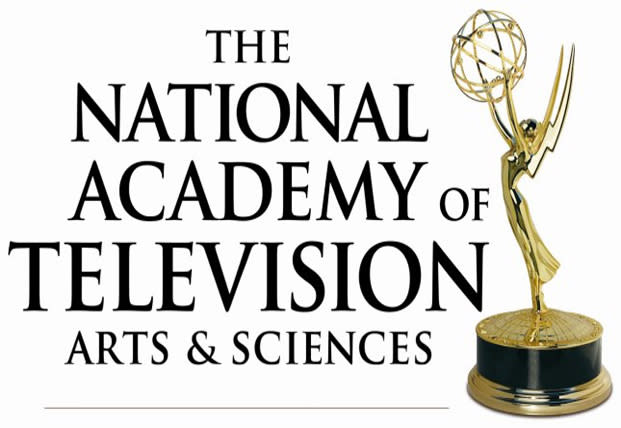Dizzying Number Of Tied Categories Are Thing Of The Past At Annual News & Documentary Emmys

“All right. I am told there is a tie.”
— Presenter N.J. Burkett, president of the New York chapter of NATAS, at the 2014 News & Documentary Emmy Awards
For decades, the biggest names in television news were honored at the annual News & Documentary Emmy Awards through a voting system that was designed to generate a bewildering number of ties.
More from Deadline
News & Documentary Emmy Noms: PBS Dominates Again As CBS Nips HBO For Second - Full List
News & Documentary Emmy Noms Revealed: 'Vice News Tonight' Dominates As CNN Leads Networks
Daytime Emmy Nominations: 'General Hospital' Leads Field & 'Kelly Clarkson' Tops Talkers
Since the awards were launched in 1980, more than 280 categories ended in ties, including some crazy ones in the early years. At the inaugural awards in 1980, there were two nine-way ties and an eight-way tie. In 1981, a category ended in a 21-way tie. By 1985, a total of 24 awards – nearly half of all the those presented – ended in ties. During the 1990s, there were 124 ties, averaging more than 12 a year.
Records provided to Deadline by the National Academy of Television Arts & Sciences reveal that since 1980, only four of 39 shows didn’t include at least one tied category – averaging more than seven a year. By contrast, the Academy Awards has only had six ties in its 90-year history.
There were four ties at the 35th annual News & Documentary Emmys in 2014, and four more in 2015, after which NATAS changed its rules to make multiple winners in the same category much less likely. Even so, there was another tie in 2016 but none since then.
The 40th annual awards are being held tonight at Lincoln Center’s Alice Tully Hall in New York City, where more than 1,000 TV journalists, news executives and documentarians will gather to honor their own. As was the case in the past two years, this year’s awards are not expected to produce any ties.

NATAS
“In years past, there have been many multiple winners,” said Adam Sharp, NATAS president and CEO. “In 2015, we changed the rules in order to essentially break ties and make more clear results in the competition. Under the new procedures, ties are still possible but considerably less likely,” he told Deadline. “When you go from four or five in 2015, to one the following year, and none the two years after, that shows how effective this change has been.”
Sharp said the awards show has evolved over the years. “We’ve gone through several leadership changes over the years,” he said. “Perspectives change. I also think the feedback and expectations from the community we serve changed over the years. And this led to the change in policies. That change was not just to news and documentaries, but to the daytime and sports Emmys as well.”
“There have been long-running discussions about each of these competitions,” Sharp said. “Should these be marks of excellence, where everything that rises to a certain level of quality? Or should it simply be a contest for who is absolutely best that year? That is a question that continues to be discussed year-to-year. At the end of the day, the mission of the organization is to recognize visual media across all its forms.”
The reason for so many ties in years past is that unlike the Oscars, where the award goes to the top vote-getter, the News & Documentary Emmys were awarded on a 100-points voting system by a panel of judges, whose votes were tabulated by an accounting firm that then chose the winners. Sometimes the votes resulted in statistical ties – as was the case in the six Oscar ties – but in many cases, multiple awards were presented as long as the nominees were closely bunched and far ahead of the other nominees in their category. As one source put it, the awards were “not a horse race,” but a recognition of excellence.
Under the rules implemented in 2015, only the top vote-getters in each category is now awarded an Emmy. Before that, any number of nominees could be declared winners if their scores were closely bunched at the top. “I can’t tell you how many were direct ties or very close,” Sharp said, “but I can tell you that the vast majority were literal ties – identical scores for each.”
As a result, many of the TV news industry’s top anchors and correspondents won Emmys as a result of ties, including Dan Rather, Lester Holt, Diane Sawyer, Brian Williams, Ted Koppel, Barbara Walters, Mike Wallace, Ed Bradley, Jane Pauley, Bill Moyers, Christiane Amanpour, Charles Kuralt, Peter Jennings, Bryant Gumbel, Connie Chung, Steve Kroft, Jim Lehrer and many others.
Famed 60 Minutes executive producer Don Hewitt was the winner of 14 Emmys, but at least half of them were the result of ties, including two in which he tied himself, receiving two Emmys for two separate episodes nominated in the same category.
Neal Shapiro, former executive producer of Dateline NBC, has been involved in more Emmy ties than anyone – at least 10, including three one year in which he tied himself for separate episodes in the same news category, and another in which he tied himself four times. Over his long career, he’s received 32 Emmys – half of which were the result of ties, including seven of which were ties with himself. Shapiro, now the president and CEO of WNET, the flagship PBS station in New York, declined comment.
Best of Deadline
SAG-AFTRA Interim Agreements: Full List Of Movies And TV Series
2023 Premiere Dates For New & Returning Series On Broadcast, Cable & Streaming
Sign up for Deadline's Newsletter. For the latest news, follow us on Facebook, Twitter, and Instagram.

